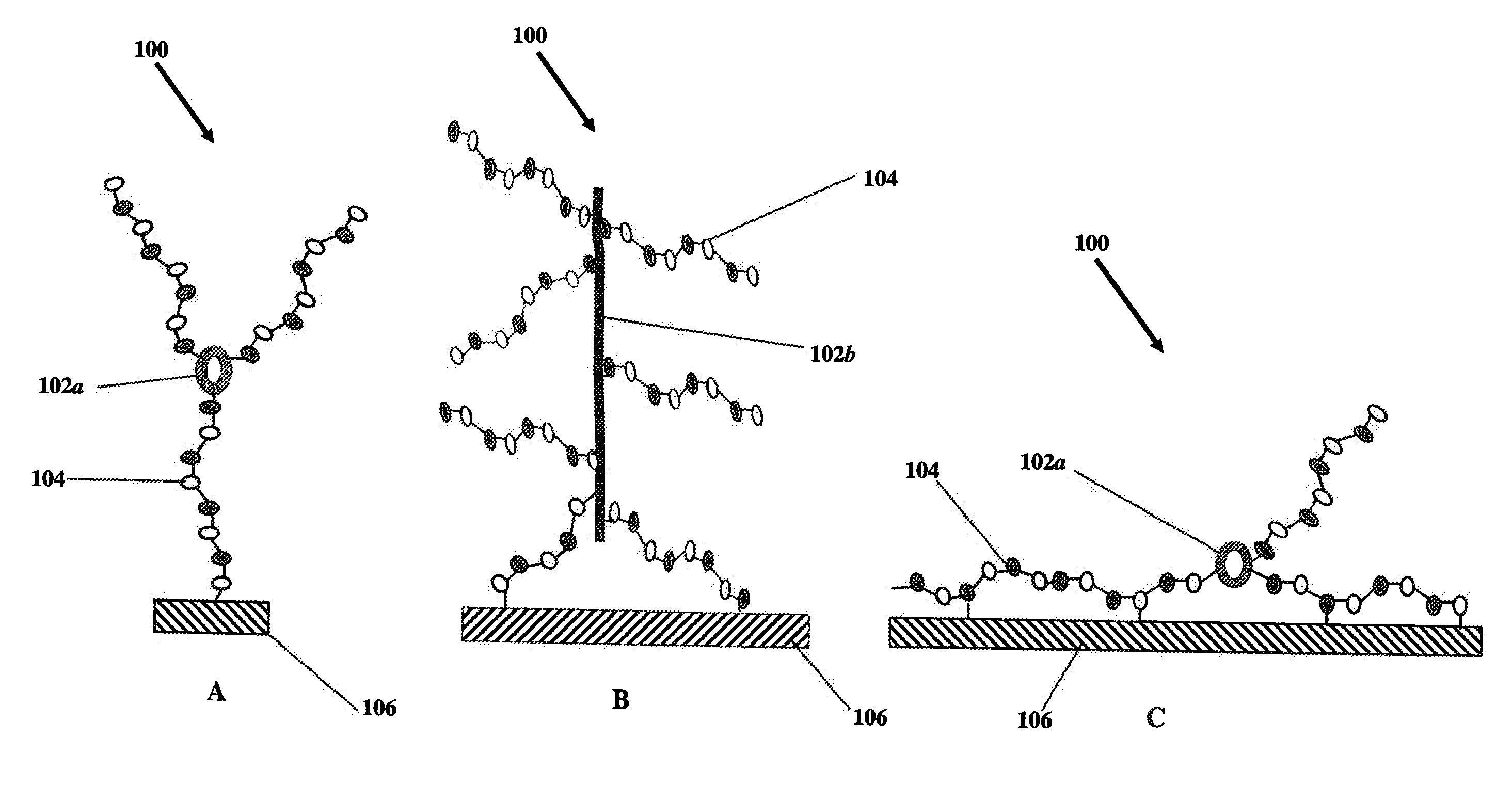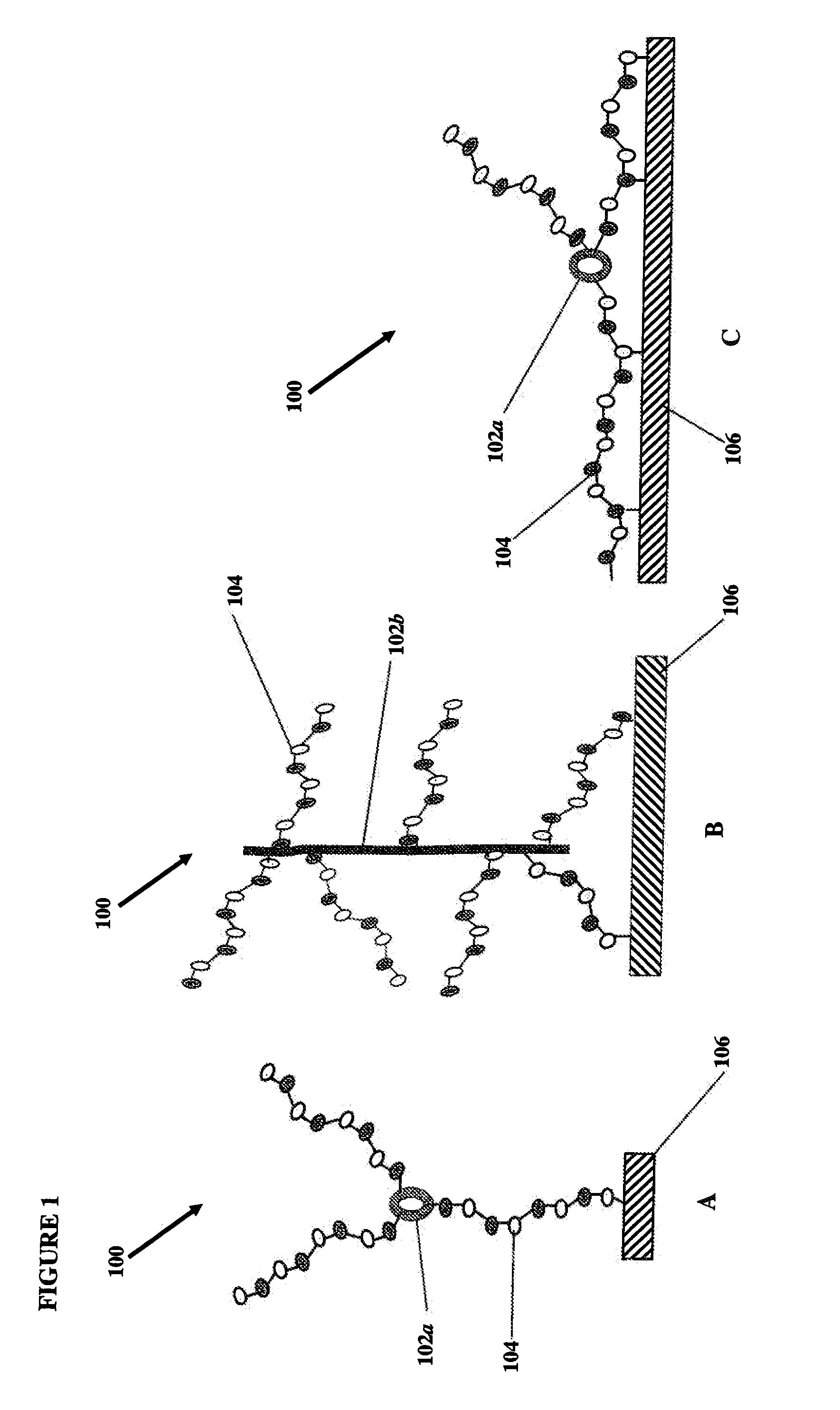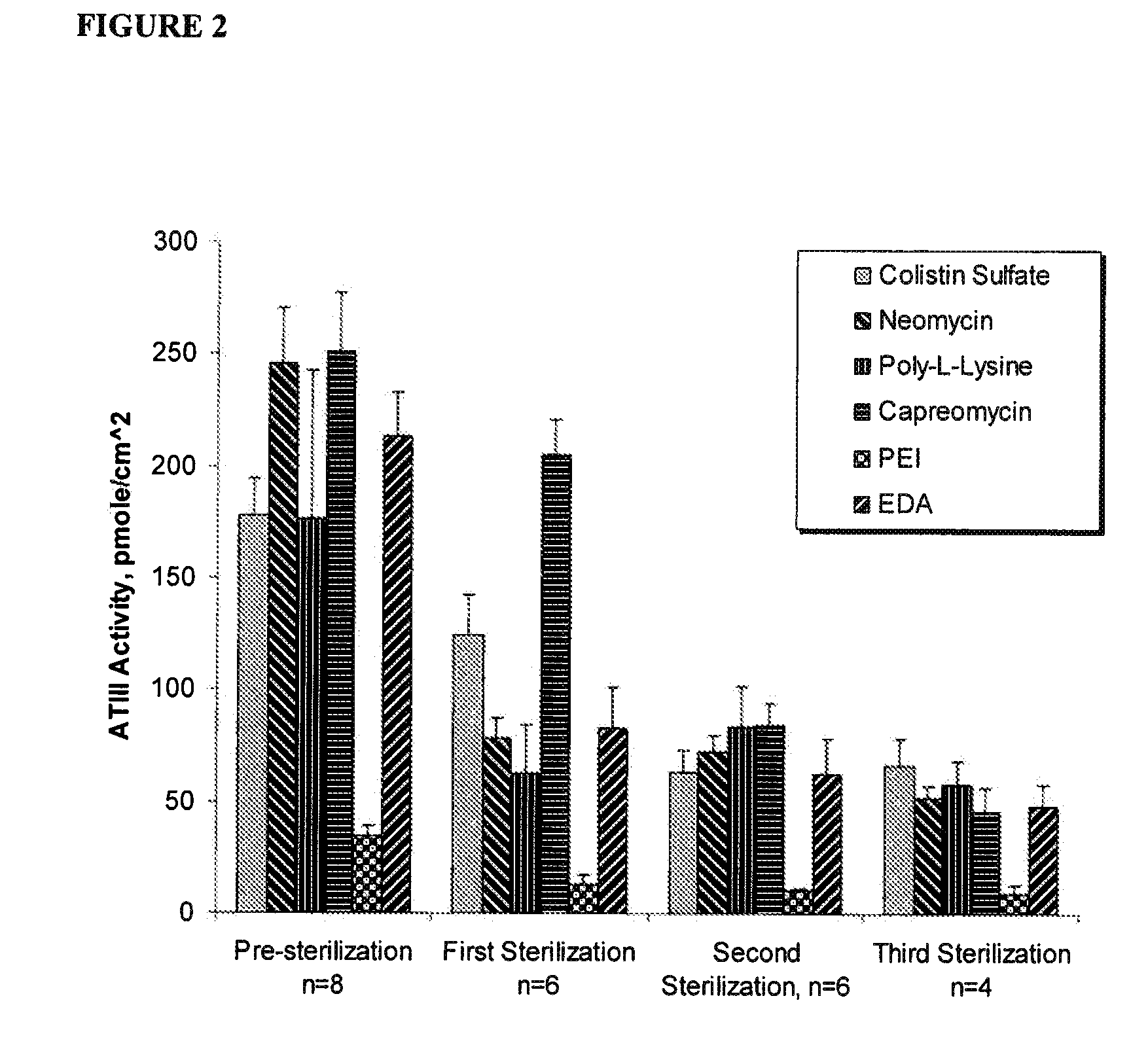Novel heparin entities and methods of use
a technology of heparin and heparin-like cells, applied in the field of new heparin-like cells, can solve the problems of adverse body response, loss of medical device function, and negative impact on the biological activity of these “biologics”
- Summary
- Abstract
- Description
- Claims
- Application Information
AI Technical Summary
Benefits of technology
Problems solved by technology
Method used
Image
Examples
example 1
This example describes the construction of heparin entities comprising heparin and colistin sulfate as the core. This heparin entity contains free terminal aldehydes that can be used for attachment to a surface of a substrate.
Colistin sulfate (0.10 g, Alpharma, Inc.) was dissolved in 300 ml of deionized (DI) water containing MES buffer (pH 4.7, BupH™ Thermo Scientific). To this was added 10 g USP heparin, 4 g N-hydroxysulfosuccinimide (sulfo-NHS, Thermo Scientific), and 4 g of 1-ethyl-3-(3-dimethylaminopropyl)carbodiimide (EDC hydrochloride, Sigma-Aldrich, St. Louis, Mo.). The reaction was allowed to proceed at room temperature for 4 hours, followed by dialysis overnight with a 50,000 MWCO membrane (Spectra / Por®). The retentate (about 350 ml out of 500 ml) was transferred to a beaker, and cooled to 0° C. Sodium nitrite (10 mg) and acetic acid (2 ml) were added and the reaction was allowed to proceed for 1 hour at 0° C. Dialysis was performed overnight with a 50,000 MWCO membrane wit...
example 2
This example describes the construction of heparin entities comprising heparin and neomycin sulfate as the core. This heparin entity contains free terminal aldehydes that can be used for attachment to a surface of a substrate.
Neomycin sulfate (0.0646 g, Spectrum Chemical) was dissolved in 300 ml of DI water containing MES buffer (pH 4.7, BupH™ Thermo Scientific). To this was added 10 g USP heparin, 4 g N-hydroxysulfosuccinimide (sulfo-NHS), and 4 g of EDC hydrochloride. The reaction was allowed to proceed at room temperature for 4 hours, followed by dialysis overnight with a 50,000 MWCO membrane (Spectra / Por®). The retentate (about 400 ml out of 505 ml) was transferred to a beaker and cooled to 0° C. Sodium nitrite (10 mg) and acetic acid (2 ml) were added and the reaction was allowed to proceed for 1 hour at 0° C. Dialysis was performed overnight with a 50,000 MWCO membrane with the addition of 1 g NaCl to the dialysis liquid. The dialyzed retentate was filtered twice using a 20 mi...
example 3
This example describes the construction of heparin entities comprising heparin and capreomycin sulfate as the core. This heparin entity contains free terminal aldehydes that can be used for attachment to a surface of a substrate.
Capreomycin sulfate (0.0501 g, Sigma-Aldrich, St. Louis, Mo.) was dissolved in 300 ml of DI water containing MES buffer (pH 4.7, BupH™ Thermo Scientific). To this was added 10 g USP heparin, 4 g N-hydroxysulfosuccinimide (sulfo-NHS), and 4 g of EDC hydrochloride. The reaction was allowed to proceed at room temperature for 4 hours. The reaction mixture was filtered once using a 20 micrometer, 0.00079 inches U.S.A. standard testing sieve, A.S.T.M.E.-11 specification NO. 635 to remove small particles and the filtrate was dialyzed overnight with a 50,000 MWCO membrane (Spectra / Por®). The retentate (about 400 ml out of 515 ml) was transferred to a beaker and cooled to 0° C. Sodium nitrite (10 mg) and acetic acid (2 ml) were added and the reaction was allowed to p...
PUM
| Property | Measurement | Unit |
|---|---|---|
| Molar mass | aaaaa | aaaaa |
| Molar mass | aaaaa | aaaaa |
| Molar mass | aaaaa | aaaaa |
Abstract
Description
Claims
Application Information
 Login to View More
Login to View More - R&D
- Intellectual Property
- Life Sciences
- Materials
- Tech Scout
- Unparalleled Data Quality
- Higher Quality Content
- 60% Fewer Hallucinations
Browse by: Latest US Patents, China's latest patents, Technical Efficacy Thesaurus, Application Domain, Technology Topic, Popular Technical Reports.
© 2025 PatSnap. All rights reserved.Legal|Privacy policy|Modern Slavery Act Transparency Statement|Sitemap|About US| Contact US: help@patsnap.com



